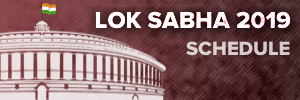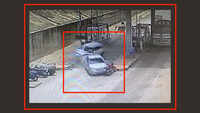
HYDERABAD: Cyberattacks on corporates and public entities is rapidly moving north. If the findings of the Data Breach Investigations Report (DBIR) for 2019 by Verizon is anything to go by, then this year C-level executives (CEOs, CFOs, CIOs, COOs etc) are 12 times more likely to be the target of social incidents (cybercrimes which may have not lead to any loss) and nine times more likely to face social breaches (where there is loss).
“A successful attack on senior executives can reap large dividends due to their — often unchallenged — approval authority and privileged access into critical systems. Typically, time-starved and under pressure to deliver, senior executives quickly review and click on emails prior to moving on to the next (or have assistants managing email on their behalf), making suspicious emails more likely to get through,” the report said.
While top honchos are on the radar of cyber criminals, attacks on human resource personnel have decreased by six times from last year. The 12th DBIR is based on data from 41,686 security incidents and 2,013 data breaches provided by 73 data sources, both public and private entities, spanning 86 countries.
“Ransomware attacks are still going strong and account for nearly 24% of incidents where malware was used. Ransomware has become so commonplace that it is less frequently mentioned in the specialised media unless there is a high-profile target in the mix. However, it is still a serious threat to all industries,” the report said.
With companies adopting cloud-based solutions to store data, there has been an increase in hacking of cloud-based email servers, it said. Besides, web-based email accounts being compromised using stolen credentials is rising and seen in 60% of attacks involving hacking of a web application.
Chip and pin tech helps curb frauds
In the financial sector, the chip and pin payment technology has started delivering security dividends as the number of physical terminal compromises in card-related breaches is decreasing compared to web application compromises. Healthcare, however, continues to be the only industry to show a greater number of insider attacks as compared to external attacks (60% versus 42% respectively).
“A successful attack on senior executives can reap large dividends due to their — often unchallenged — approval authority and privileged access into critical systems. Typically, time-starved and under pressure to deliver, senior executives quickly review and click on emails prior to moving on to the next (or have assistants managing email on their behalf), making suspicious emails more likely to get through,” the report said.
While top honchos are on the radar of cyber criminals, attacks on human resource personnel have decreased by six times from last year. The 12th DBIR is based on data from 41,686 security incidents and 2,013 data breaches provided by 73 data sources, both public and private entities, spanning 86 countries.
“Ransomware attacks are still going strong and account for nearly 24% of incidents where malware was used. Ransomware has become so commonplace that it is less frequently mentioned in the specialised media unless there is a high-profile target in the mix. However, it is still a serious threat to all industries,” the report said.
With companies adopting cloud-based solutions to store data, there has been an increase in hacking of cloud-based email servers, it said. Besides, web-based email accounts being compromised using stolen credentials is rising and seen in 60% of attacks involving hacking of a web application.
Chip and pin tech helps curb frauds
In the financial sector, the chip and pin payment technology has started delivering security dividends as the number of physical terminal compromises in card-related breaches is decreasing compared to web application compromises. Healthcare, however, continues to be the only industry to show a greater number of insider attacks as compared to external attacks (60% versus 42% respectively).
#ElectionsWithTimes
Elections 2019

Trending Topics
LATEST VIDEOS
City
 Caught on cam: High speed car hits another vehicle at toll gate of outer ring road in Hyderabad
Caught on cam: High speed car hits another vehicle at toll gate of outer ring road in Hyderabad  Robbery caught on camera: Gang loots Rs58.9 lakh from an ATM van
Robbery caught on camera: Gang loots Rs58.9 lakh from an ATM van  Kerala: Mahout cries, as elephant Cherpulassery Parthan dies; video goes viral
Kerala: Mahout cries, as elephant Cherpulassery Parthan dies; video goes viral  This Pune botanist has been spending her life without electricity
This Pune botanist has been spending her life without electricity
More from TOI
Navbharat Times
Featured Today in Travel
Quick Links
Lok Sabha Election Schedule 2019Lok Sabha Election NewsDelhi Capitals teamMI team 2019Rajasthan Royals 2019RCB team 2019Maharashtra Lok Sabha ConstituenciesBJP Candidate ListBJP List 2019 TamilnaduShiv Sena List 2019AP BJP List 2019Mamata BanerjeeBJP List 2019 MaharashtraPriyanka GandhiBJP List 2019 KarnatakaAMMK Candidate List 2019BJP List 2019 WBLok Sabha Elections in Tamil NaduBSP List 2019 UPNews in TamilLok Sabha Poll 2019Satta Matka 2018PM ModiMahagathbandhanNagpur BJP Candidate ListChandrababu NaiduTamil Nadu ElectionsUrmila MatondkarNews in TeluguMadras High CourtTejashwi YadavArvind KejriwalTejasvi SuryaPawan KalyanArvind KejriwalYogi AdityanathJaya PradaSatta King 2019Srinagar encounter
Get the app




